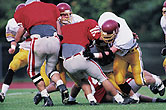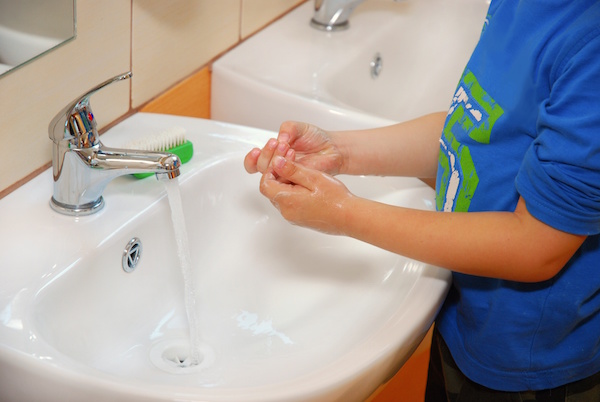
THURSDAY, June 2 (HealthDay News) — They are meant to protect football players’ eyes from serious injury, but new research reveals that used faceshields are more likely to break on high-velocity impact.
The survey of college football equipment managers, conducted by Ohio State University, also found that only about 50 percent of the schools questioned had a replacement policy in place for used or damaged shields.
In the study, published in the journal Optometry, researchers tested the durability of new and game-worn faceshields by hurling baseballs at them with an air canon at five different velocities, ranging from 116 to 150 miles per hour (roughly the equivalent of an adult kicking a soccer ball). Although all the new faceshields were unaffected, more than one-third of the used faceshields cracked during testing — even at lower forces of contact.
“Based on the results, we felt that multiple impacts to shields were probably the likely cause for the lower resistance to impact over time,” study author Aaron Zimmerman, an assistant professor of optometry at Ohio State, said in a university news release. “No matter what the cause is, you do not want to have a protective device fail and potentially cause a more severe injury.”
The researchers argued their findings were significant given the fact that only about half of the football programs evaluated replaced faceshields that have minor scratches or cracks. The study also found that about one-third of the programs would replace a faceshield if it was substantially damaged, and 10 percent would replace it but only if the damage affected a player’s ability to see.
Just one manager reported that new faceshields — which cost around $40 to $50 a shield — were distributed to players before every game.
The researchers concluded that college football programs should develop a universal policy or set of guidelines for routine inspection and replacement of used faceshields. They also noted that players who have certain optic nerve disorders or poor vision in one eye (the latter affecting about 1.5 percent of players) should be required to wear a faceshield during all practices and games.
Although most used faceshields cracked on the side during testing, a few shattered in a host of sharp pieces that could tear the retina or even pierce the eye.
“We feel that each institution should have some sort of similar policy,” Zimmerman added. “Once a week the shields should be inspected, particularly where they fasten to the helmet. But players should be encouraged to glance a faceshield over before each practice and game. And if there’s a deep scratch or crack present, it definitely needs to be replaced.”
More information
The American Academy of Pediatrics offers more tips on how to prevent sports injuries..

